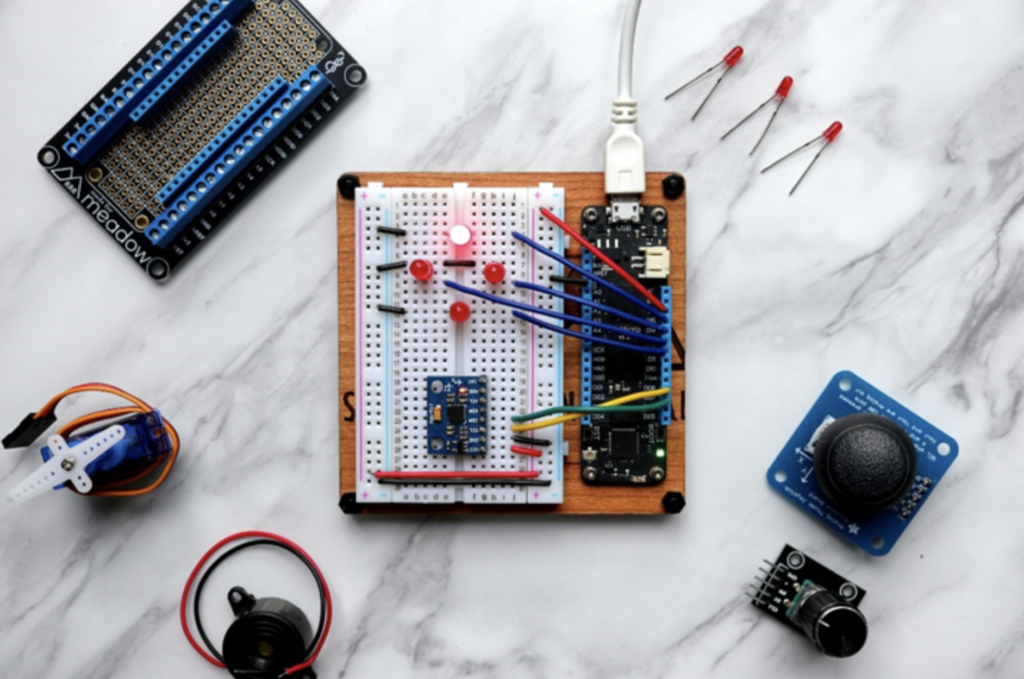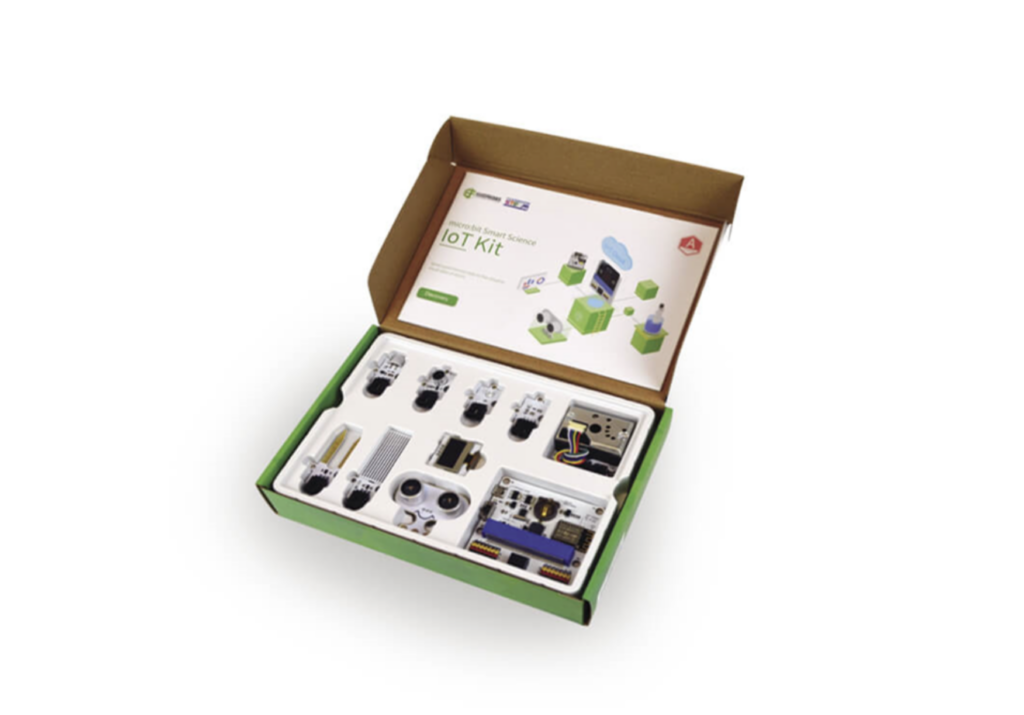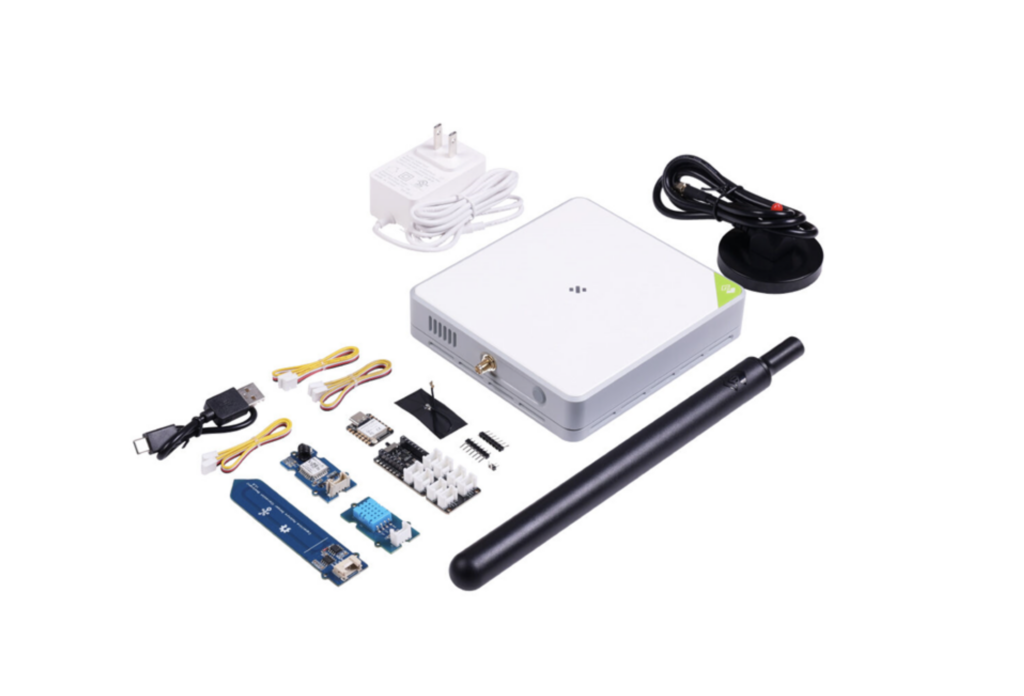
ADA Webinar: Let’s start with Arduino IoT Cloud
June 19, 2024
GenAIEdu: Integrating Generative AI in education
August 12, 2024The Internet of Things, fueled by rapid advancements in computing and communications, represents an already established era in technological evolution. In this era, devices with networking capabilities, called ‘Things,’ communicate seamlessly through the Internet to share data and interact with each other. The Internet of Things emerges as a driving factor in addressing pressing societal challenges like climate change, sustainability, urbanization, and the energy transition. Moreover, its transformative role extends to sectors such as industry, manufacturing, agriculture, and transportation.
While still evolving, IoT education is approaching maturity, with established post-graduate programs and its incorporation into relevant undergraduate programs like electronic engineering, computer science, and telecommunications. However, the crucial role of IoT across diverse fields is prompting a trend towards introducing IoT principles at earlier stages of education. This allows students to develop a foundational understanding and participate in a technology-driven future. Primary and secondary education are the environments where IoT does not necessarily comprise the subject to be taught, rather than the tool through which sustainability, productivity and optimization goals are met by combining technologies and other disciplines, such as mathematics and engineering.
IoT education and STEM education go hand-in-hand, empowering students to delve into scientific disciplines, explore technology, and apply their engineering skills and mathematical knowledge through engaging IoT projects. Theoretical knowledge of the Internet of Things alone is not sufficient. Effective teaching of IoT concepts requires hands-on tutoring to form a dynamic and engaging learning context that provides students with practical experience. To facilitate this learning experience, educators need to rely on educational kits specifically designed for IoT.
This article explores the benefits of using IoT educational kits and the practical results you can expect. We’ll then provide a breakdown of the components needed to build your own kit, followed by a look at four popular ready-made options on the market.
Educational kits are popular in IoT education due to their immersive, hands-on learning approach, which allows students to directly interact with and manipulate IoT devices. They constitute a practical, engaging, and affordable way of entering the IoT domain, providing hands-on experiences while fostering creativity and reinforcing problem-solving and troubleshooting skills.
Benefits of using educational kits for IoT education include:
- Hands-on experience
Students have the opportunity to work directly with hardware parts to assemble, configure, and write source code for new IoT devices. They learn how to combine microcontrollers, sensors, and actuators with communication modules to gain insights into how they can work together to form a functional device and integrate it into an IoT network. - Cross-field IT & IoT learning
Educational kits open doors for students to explore a vast landscape of information and internet of things technologies, encompassing hardware, programming, software development and debugging, networking and communication protocols, databases, analytics and visualization, artificial intelligence and machine learning, all the way to security, privacy, and ethical considerations. - Interdisciplinary study
With IoT educational kits, learners can blend their technology skills with knowledge from various disciplines, such as electronics, robotics, engineering, physics, mathematics, as well as environmental studies and social sciences. This approach promotes the integration of knowledge in the technological area into the broader cognitive field of the learner. - Creativity and innovation
Creativity and innovation are key aspects of learning through IoT educational kits. These kits provide students with a platform for independent experimentation with various components, allowing them to explore techniques to design, build, and implement their own IoT solutions. This encourages them to think outside the box, try new ideas, identify problems addressable through the Internet of Things, and develop new solutions. Freely experimenting and testing ideas stimulates creativity and cultivates a mindset of innovation. - Soft skills development
Beyond technical expertise, learning IoT with educational kits cultivates a range of valuable soft skills applicable to academic, professional, and personal endeavors. These skills include problem-solving, troubleshooting, collaboration, teamwork, decision-making, autonomy, initiative, and adaptability. For example, students develop problem-solving and troubleshooting skills by overcoming technical challenges in their projects. They also sharpen their decision-making skills by evaluating different approaches and techniques to developing an IoT solution. Similarly, collaboration and teamwork flourish as students interact on group IoT projects, sharing ideas and working towards common goals. - Affordable
Regardless of whether an educational organization builds custom kits, tailor-made for its curriculum, or purchases off-the-shelf options, IoT kits are generally cost-effective due to the valuable learning and development opportunities they offer. Educational organizations can leverage volume discounts for larger purchases, making them even more affordable.
IoT educational kits can also yield tangible results for learners, enabling them to participate in real-world applications, showcase their technical skills and achievements, enrich their portfolios, develop business cases, or make an impact in their communities.

Photo by Jorge Ramirez on Unsplash
Tangible results achieved with educational kits are as follows:
- Prototypes of functional IoT devices
By completing an IoT project using an educational kit, students typically walk away with a fully functional IoT device. This could be a smart home component, an environmental monitoring system, a wearable health tracker, or any other creative solution they have brought to life. - Ideas for real-world problems and Community impact
By developing prototypes that address real-world challenges using IoT technology, students gain a firsthand understanding of the potential impact and value of IoT solutions in their communities. This knowledge can empower them to actively contribute to crowdsourcing campaigns or citizen science projects with their devices. - Results showcase and Career development
Students can take the next step by showcasing their completed IoT projects at exhibitions, competitions, or presentations. These events offer valuable opportunities for students to share their work and receive feedback on their skills, creativity, and innovative approaches. This can be a great way to connect with peers, educators, industry professionals, and potential employers. - Proof of concept and Business case development
A tangible result that learners can achieve is the opportunity to create a business case for their IoT projects. By developing a proof of concept and showcasing its value, learners can articulate the benefits, costs, and feasibility of their IoT solutions. Hence, using IoT educational kits results not only in understanding and applying IoT principles but also to evaluating the commercial potential of their creations.
An IoT Educational Kit typically includes a comprehensive range of hardware essentials, software, service subscriptions, educational materials, and optional advanced components, carefully curated to provide learners with a well-rounded experience, encompassing everything from assembly and programming to deployment and refinement of IoT projects.
Here’s a breakdown of the typical components that make up an IoT educational kit:
Hardware
- Computing Unit: A microcontroller-based or single board computer serving as the brain of the IoT device.
- IoT Communication Interfaces: Built-in or add-on support for various IoT communication protocols provides connectivity to the IoT network.
- Sensors: These can include environmental, health, and positioning sensors, providing input data to the system.
- Actuators: Devices like motors, solenoids, and relays enable the IoT device to perform actions based on the insights.
Essentials
- Breadboards: These are used for rapid prototyping circuits without soldering.
- Breakout Boards: Provide easy access to individual pins of complex components.
- Cables and Jumper Wires: Necessary for connecting components and modules.
- Power Supply: Options include battery cells and holders or mains adapters to power the IoT device.
- Electronic Components: LEDs, buttons, resistors, capacitors, antennas, buzzers, and more for various functionalities.
- Basic Tools: Pliers, screwdrivers, and other tools for assembly.
Software
- Integrated Development Environment: Available either as downloadable software or web-based platforms for coding and developing applications.
- Libraries and Drivers: Downloadable resources to facilitate hardware and software interoperability.
- Example Code: Pre-written code snippets to assist beginners in testing their hardware.
- Open-Source Applications: Ready-to-use applications created by communities of developers that can be installed and customized for specific IoT projects.
Services and Infrastructure
- Cloud Services: Subscription to cloud platforms, often offering free tier or student plans, for data storage, processing, and analytics.
- Network Connectivity: Subscription services for projects that require long-range communication.
- SIM Cards: Required for IoT devices using mobile network connectivity.
Educational Material
- Instructions and Tutorials: Step-by-step guides to help users understand concepts and build prototypes.
- Example Projects: Demonstrative projects showcasing the capabilities of the IoT kit.
- Exercises: Hands-on exercises to reinforce the learning process.
- Self-Assessment Tests: Quizzes or tests to evaluate understanding and learning progress.
Optional/Advanced Components
- IoT Gateways: Devices to bridge connections to different communication protocols and coordinate the operation of multiple IoT devices.
- Screens: Display modules for visual feedback.
- Keypads: Input devices for user interaction and control.
- Cameras and microphones: For capturing visual and audio data.
- Power Banks: Portable power supply for mobile IoT devices or for those that operate at remote locations.
- Project Enclosures: Protective cases to house and protect the IoT device.
Educators have the flexibility to create curriculum-specific kits or versatile ones that adapt to various learning needs and project requirements. This wide range of components caters to learners of diverse ages and knowledge backgrounds, ensuring they are equipped with the resources to explore, experiment, and build in the intriguing field of IoT.
On the other hand, educators can opt for commercially available educational kits, which offer comprehensive and ready-to-use solutions, saving time and effort compared to building custom kits from scratch. Let’s introduce four such kits that are popular choices among educators.
Arduino Explore IoT Kit Rev2

Source: www.arduino.cc
Designed for high school and college students, Arduino provides an educational kit packed with essential components, empowering them to create connected devices for the Internet of Things. The Arduino Explore IoT Kit equips students with a solid understanding of core IoT principles like data collection from sensors, communication protocols, and programming. This knowledge empowers them to tackle global sustainability challenges. The kit features a Wi-Fi enabled microprocessor board with a carrier board and a plethora of sensors for temperature, humidity, pressure, volatile organic compounds, ambient light, color, moisture, and gesture detection. The kit is further equipped with functionalities for user interaction and project output, including relays for controlling devices, an SD card drive for data storage, tactile buttons for user input, an accelerometer, a motion sensor, and a rounded display for visual feedback. Additionally, it includes RGB LEDs and a buzzer for audible feedback. The kit also includes all necessary cables and an enclosure for housing the device. Students receive access to a demo version of Arduino Cloud for Education, along with 10 hands-on projects, each accompanied by 5 educational modules.
micro:bit Smart Science IoT Kit

Source: stemeducationworks.com
The micro:bit Smart Science IoT Kit is built around the micro:bit, a student-friendly microcomputer platform designed specifically for beginners and educators. The Smart Science IoT Kit leverages the micro:bit’s accessibility, allowing students to easily create and code their own digital devices with Internet of Things capabilities, focused on science and the environment. Packed with 13 modules, the kit offers a microcontroller board with built-in WiFi and Bluetooth Low Energy connectivity, a small OLED display, and a servo motor. For environmental monitoring, it boasts a comprehensive sensor suite including ambient temperature, relative humidity, barometric pressure, ambient light, noise, water level, and soil moisture sensors. Additionally, the kit includes a pyroelectric sensor for detecting human presence, an ultrasonic sensor for distance measurement, and a dust sensor.
Hackster & DFRobot IoT Starter EEDU Kit

Source: www.dfrobot.com
The IoT Starter EEDU Kit is an entry-level kit perfect for jumpstarting simple IoT projects. It provides two sensors to collect data, a relay to control devices, and a speaker for audio feedback. This kit includes a WiFi and Bluetooth enabled microcontroller, an ultrasonic distance measurement sensor, a pyroelectric motion sensor, a real-time clock module, 2 buttons equipped with LED indicators, an MP3 player module, a stereo speaker, a relay, and jumper wires.
SenseCAP LoRaWAN Starter Kit

Source: www.seeedstudio.com
The SenseCAP LoRaWAN Gateway by Seeed Studio is designed for beginners interested in experimenting with low-power long-range wireless networking for their IoT projects. The kit includes a LoRaWAN gateway, a microcontroller board supporting WiFi and BLE protocols, a LoRaWAN expansion module, temperature, humidity and soil moisture sensors, a power supply unit for the gateway, an antenna, and cables.




